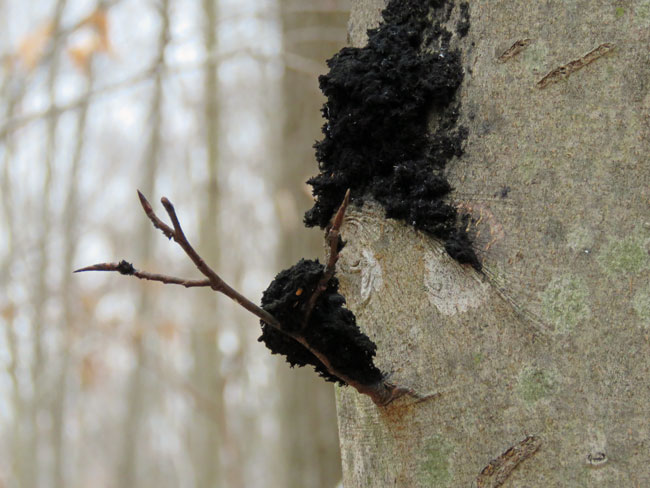
first brook crossing on the yellow trail
On a cold and cloudy winter morning we decided to explore a relatively new open space property pretty close to home. Leo Antonino Preserve was acquired by the Avalonia Land Conservancy in 2018. What a pleasant surprise we had as we meandered along the loop trail, so many twists and turns, ups and downs and bubbling brooks to cross. We haven’t had any accumulating snow this January, not even a coating. But the woods did smell like winter and the crisp cold air soon gave us rosy cheeks and runny noses.


We were curious about this mysterious black stuff we saw on lots of the beech trees. Is it another symptom of beech bark disease?

The Leo Antonino Preserve is an unexpected tract of woods, wetland, rock outcroppings and erratics … The trail includes short sections of wide-open travel on packed earth and longer stretches of single-file trail that are rocky and rooty with elevation changes. The trail travels through areas of beech and oak and along vernal pools and active brooks. Erratics and upthrust sections of granite illustrate the geologic history of this section of Connecticut. Also illustrative of the history of this property, the yellow trail features the wreck of an old Chevy truck. The section of the yellow trail north of the Chevy is the most challenging with a scramble over a steep rocky ridge.
~ Avalonia Land Conservancy website



We made several crossings over a (or two?) brook. There were no bridges so we used the stepping stones, feeling grateful that we didn’t slip on the mosses!













Near the end of the trail we spotted these black lines on the path. I can’t help wondering if it’s the same black stuff we saw on the beeches…
I’ve been trying to be more selective and to include fewer pictures in my posts, but I had to make an exception for this one. When we started this hike I didn’t expect to take many pictures but it seemed like around every turn there was something interesting to notice. We’re looking forward to returning and trying the blue trail through these woods.
























































































